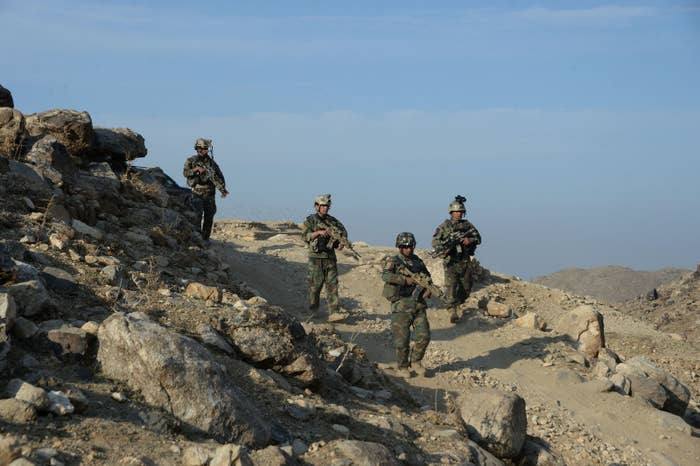
After blocking a government watchdog from releasing key data on the 16-year US effort to secure Afghanistan, the US military Tuesday abruptly changed course when the agency accused it of censoring information that previously had been available to the public.
The Special Inspector General for Afghanistan Reconstruction, which was established by Congress to audit the war, bitterly objected to the military’s new classification of measurements that show how many districts are under the control of the Afghan government or insurgents.
“This development is troubling for a number of reasons, not least of which is that this is the first time SIGAR has been specifically instructed not to release information marked ‘unclassified’ to the American taxpayer,” John Sopko, who heads the agency, said in the quarterly report released Tuesday, which did not include the previously available figures.
A few hours after the report’s release, the US-led NATO coalition blamed "a human error in labeling,” saying that it had not intended to block the information from being published. It also disclosed some of those statistics, showing that 44% of the country is currently under control or influence of insurgents.
However, as of Tuesday afternoon, SIGAR had “yet to receive any formal notification that we are clear to release this information publicly,” spokesperson Jennifer George-Nichol told BuzzFeed News.
SIGAR included in its report screenshots of the instructions from the Defense Department, marking the data as unclassified but “not releasable to the public.”
Regardless of the reversal on district data Tuesday, other information about the war in Afghanistan began to be classified months before. For the first time in eight years, the US military last fall classified metrics on the performance and strength of the local security forces, which the US has spent more than $70 billion to train and equip since 2002.
The US military also is not releasing data on civilian casualties due to coalition airstrikes, according to the report, citing the Afghan government’s wishes to withhold the information. The Afghan defense ministry, however, told the Wall Street Journal it never made such a request.
Sopko told BuzzFeed News that the US military also cited the Afghan defense ministry in stopping the release of information on how Afghan forces are progressing. He says his office has asked the US military to confirm in writing that the Afghan government had asked that the information not be published, but has yet to receive anything in response.
“How many Afghan police and soldiers are there, how many casualties are they suffering, how many are going AWOL, how well do they perform — all that was classified,” Sopko said in an interview. “One of the last things that was available was how much of the country does the Afghan government control.”
SIGAR's last report, released in October, highlighted the deteriorating security situation. It showed that an additional 700,000 people in Afghanistan were living in districts under Taliban control or influence compared to six months earlier. As of August, 13% of the 407 districts in Afghanistan were under Taliban control or influence, compared with 11% in February.
January has seen a surge of deadly attacks in the capital of Kabul. Eighteen people were killed in the siege of a hotel by Taliban militants last week. More than 100 people were killed a few days later when the Taliban blew up an ambulance packed with explosives on a busy street in the city. Another attack claimed by the Islamic State killed at least 11 Afghan soldiers at a military academy in Kabul Monday.
The US military is setting markers for what success looks like in the stalemated war in Afghanistan, and then not showing the public the numbers to determine if its efforts are actually working, Sopko said.
US Army Gen. John Nicholson, who commands American and NATO troops there, last November set the goal of having the Afghan government control at least 80% of the country within two years. According to the last SIGAR report with that data, currently just 231 of the 407 districts — less than 57% — were under the Afghan government’s control or influence, a 7% decrease from a year before. At the same time, the number of districts controlled by the Taliban increased from 33 to 54.
President Donald Trump has deployed an additional 3,000 US troops to the country, bringing the total to 14,000.
The back and forth Tuesday was just the latest in long-standing tensions between SIGAR, which has been accused of sensationalizing its reports on wasteful spending in the war, and military officials. Sopka said the recent classifications are hindering the agency from doing the work Congress created it for.
“That’s our job, to provide a report four times a year on how well we’re doing in Afghanistan,” he told BuzzFeed News. “I’m not doing this to kill trees.”

